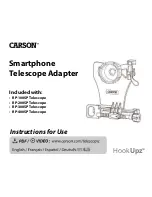
6
GAZELLE MANUAL
6
Bicycle Owner’s Manual
1. First
NOTE: We strongly urge you to read this manual in its
entirety before your first ride. At the very least, read and
make sure that you understand each point in this section,
and refer to the cited sections on any issue which you
don’t completely understand. Please note that not all
bicycles have all of the features described in this manual.
Ask your dealer to point out the features of your bicycle.
A. Bike fit
1. Is your bike the right size? To check, see Section 3.A.
If your bicycle is too large or too small for you, you may
lose control and fall. If your new bike is not the right size,
ask your dealer to exchange it before you ride it.
2. Is the saddle at the right height? To check, see
Section 3.B. If you adjust your saddle height, follow the
Minimum Insertion instructions in Section 3.B.
3. Are saddle and seat post securely clamped? A
correctly tightened saddle will allow no saddle movement
in any direction. See Section 3.B.
4. Are the stem and handlebars at the right height for
you? If not, see Section 3.C.
5. Can you comfortably operate the brakes? If not, you
may be able to adjust their angle and reach. See Section
3.D and 3.E.
6. Do you fully understand how to operate your new
bicycle? If not, before your first ride, have your dealer
explain any functions or features which you do not
understand.
B. Safety first
1. Always wear an approved and correct fitting
helmet when riding your bike, and follow the helmet
manufacturer’s instructions for fit, use and care.
2. Do you have all the other required and recommended
safety equipment? See Section 2. It’s your responsibility
to familiarize yourself with the laws of the areas where
you ride, and to comply with all applicable laws.
3. Do you know how to correctly secure your front and
rear wheels? Check Section 4.A.1 to make sure. Riding
with an improperly secured wheel can cause the wheel to
wobble or disengage from the bicycle, and cause serious
injury or death.
4. If your bike has toeclips and straps or clipless (“step-
in”) pedals, make sure you know how they work (see
Section 4.E). These pedals require special techniques and
skills. Follow the pedal manufacturer’s instructions for
use, adjustment and care.
5. Do you have “toe overlap”? On smaller framed
bicycles your toe or toeclip may be able to contact the
front wheel when a pedal is all the way forward and the
wheel is turned. Read Section 4.E. to check whether you
have toeclip overlap.
6. Does your bike have suspension? If so, check Section
4.F. Suspension can change the way a bicycle performs.
Follow the suspension manufacturer’s instructions for
use, adjustment and care.
C. Mechanical Safety Check
Routinely check the condition of your bicycle before
every ride.
▸ Nuts, bolts screws & other fasteners: Because
manufacturers use a wide variety of fastener sizes and
shapes made in a variety of materials, often differing by
model and component, the correct tightening force or
torque cannot be generalized. To make sure that the many
fasteners on your bicycle are correctly tightened, refer to
the Fastener Torque Specifications in Appendix D of this
manual or to the torque specifications in the instructions
provided by the manufacturer of the component in
question. Correctly tightening a fastener requires a
calibrated torque wrench. A professional bicycle mechanic
with a torque wrench should torque the fasteners on
you bicycle. If you choose to work on your own bicycle,
you must use a torque wrench and the correct tightening
torque specifications from the bicycle or component
manufacturer or from your dealer. If you need to make an
adjustment at home or in the field, we urge you to exercise
care, and to have the fasteners you worked on checked by
your dealer as soon as possible.
Note that there are some
components which require special tools and knowledge. In
Sections 3 and 4 we discuss the items which you may be able
to adjust yourself. All other adjustments and repairs should
be done by a qualified bicycle mechanic.
WARNING: Check all fasteners and quick releases for
correct and safe function, even if the bike was left
unattended just for a short period of time!
WARNING: Correct tightening force on fasteners –
nuts, bolts, screws– on your bicycle is important.
Too little force, and the fastener may not hold
securely. Too much force, and the fastener can strip
threads, stretch, deform or break. Either way, incorrect
tightening force can result in component failure, which
can cause you to loose control and fall.
▸ Make sure nothing is loose. Lift the front wheel off
the ground by two or three inches, then let it bounce
on the ground. Anything sound, feel or look loose? Do a
visual and tactile inspection of the whole bike. Any loose
parts or accessories? If so, secure them. If you’re not sure,
don`t start the ride. First ask someone with experience to
check.
▸ Tires & Wheels: Make sure tires are correctly
inflated (see Section 4.G.1). Check by putting one hand
on the saddle, one on the intersection of the handlebars
and stem, then bouncing your weight on the bike while
looking at tire deflection. Compare what you see with how







































